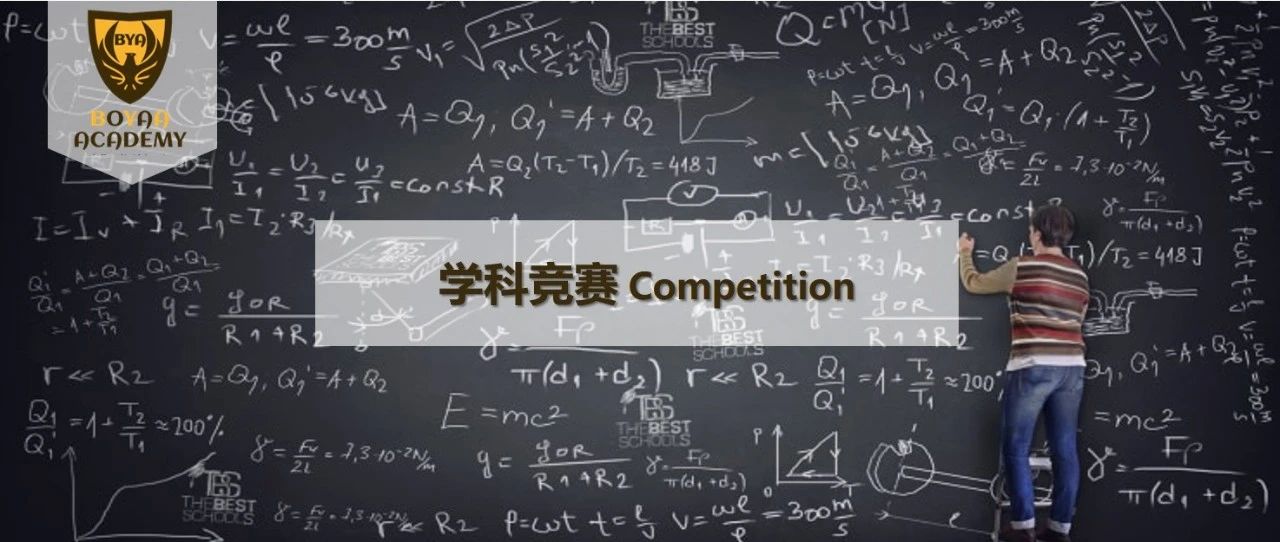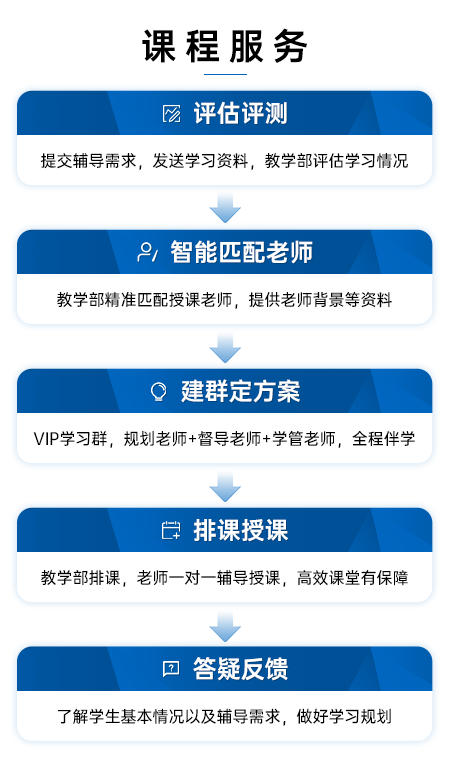今天请到咱们机构的H老师给大家详细介绍一下 CIE economics(9708) AS考试。
01、考试内容
AS经济学共考5个单元的内容。这5个单元分别是:
1.Basic economic ideas and resource allocation|基本经济学概念和资源配置
2.The price system and the micro economy|价格体系和微观经济学
3.Government microeconomic intervention|政府微观调控
4.The macro economy|宏观经济学
5.Government macroeconomic intervention|政府宏观调控
这5个单元大致可以分为3个部分。第一单元主要介绍经济学基本概念;第二、三单元介绍微观经济学;第四、五单元介绍宏观经济学。
02、考试形式
Component |
|
ASlevel |
|
Paper 1 单选题1 小时 30道选择题,30分 |
40% |
Paper 2 材料分析题(data response)+ 小论文(essay) 1小时30分钟 Section A: one data response question (20 marks) Section B: one structured essay from a choice of three (20 marks) Based on the AS Level syllabus content 40 marks |
30% 30% |
paper 1 具体介绍
paper 1 一共包括30道选择题。前15道选择题一般考经济学基本概念和微观问题。后15道选择题一般考宏观问题。
A: 对基本经济学原理的理解(来自第一单元):如opportunity cost (机会成本)、positive & normative statements (实证表述和规范表述)、PPC curve (生产可能性曲线)等都是考试必考内容。
下面?我们一起看几道真题:
(9708-m2020-Paper 1/2-Q1) - Basic Economic Ideas and Resource Allocation
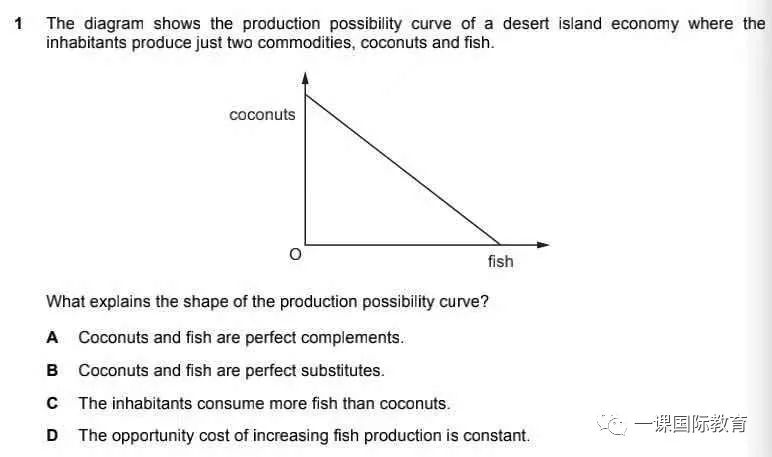
知识点:PPC curve
(9708-m2020-Paper 1/2-Q2) - Basic Economic Ideas and Resource Allocation

知识点:机会成本
附第一单元完整知识点清单
1basiceconomicideasandresourceallocation(ASlevel) |
|
a) Scarcity, choice and opportunity cost 稀缺性,取舍和机会成本 |
• the fundamental economicproblem• themeaningofscarcityandtheinevitabilityof choices at all levels (individual, firms, governments) • the basic questions of what will beproduced, how and forwhom • the meaning of the term, ‘ceterisparibus’• themarginanddecisionmakingatthemargin• short run, long run, very longrun |
b) Positive and normative statements 实证表述和规范表述 |
• the distinction between facts andvaluejudgements |
c) Factors of production 4大生产要素 |
• the rewards to the factors of production:land,labour, capital andenterprise • specialisation and division oflabour |
d) Resource allocation in different economic systems and issues of transition 不同经济体制下的资源配置 |
• decisionmakinginmarket,plannedandmixedeconomies • the role of the factor enterprise in amoderneconomy |
e) Production possibility curves PPC 生产可能性边界 |
• shape and shifts of thecurve• constant and increasing opportunitycosts |
f) Money 货币 |
• functions and characteristics in amoderneconomy • barter, cash and bank deposits, cheques,nearmoney,liquidity |
g) Classification of goods and services 物品和服务的分类 |
• free goods, private goods (economicgoods)and publicgoods • merit goods and demerit goods as theoutcomeof imperfect information byconsumers. |
B:对price mechanism的理解(来自第二单元):如demand and supply curve (供求曲线);PED,YED, XED (需求价格、收入和交叉弹性);PES (供给价格弹性);consumer and producer surplus (消费者/生产者剩余)等都是考试重点。
下面?我们一起看几道真题:(9708-m2020-Paper 1/2-Q7) -ThePriceSystemandtheMicroEconomy
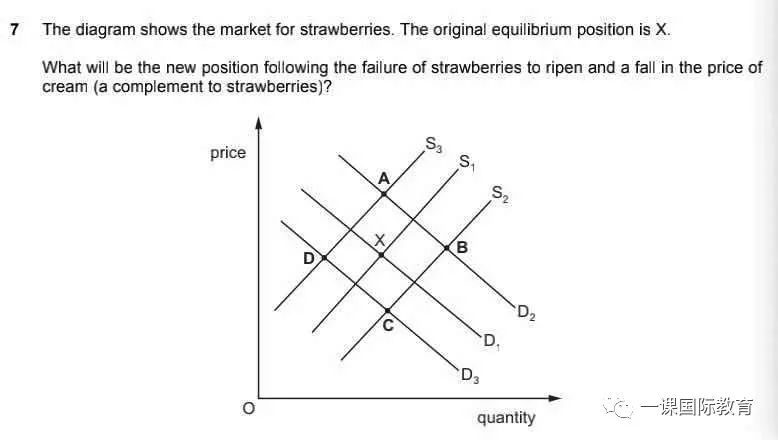
知识点:供求关系
(9708-m2020-Paper 1/2-Q12) -ThePriceSystemandtheMicroEconomy
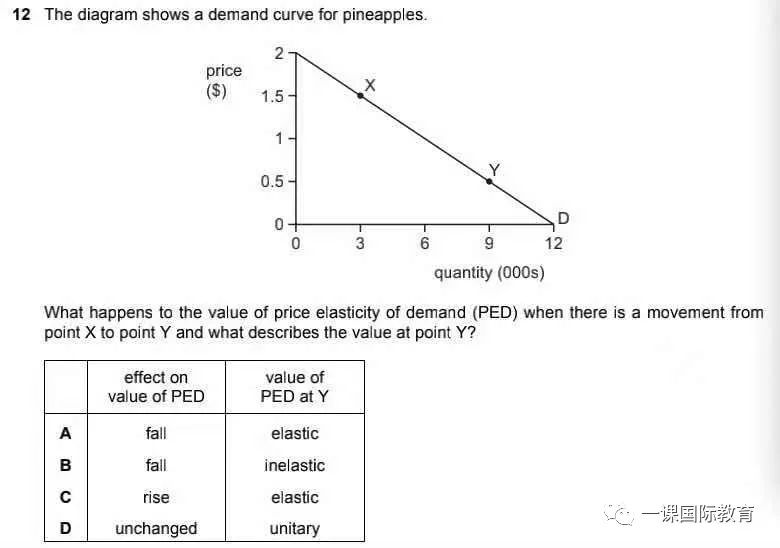
知识点:PED 需求价格弹性
附第二单元完整知识点清单
2Thepricesystemandthemicroeconomy(ASlevel) |
|
a) Demand and supply curves 供求曲线 |
• effectivedemand• individual and market demand andsupply• factors influencing demand andsupply |
| b) Price elasticity, income elasticity and cross-elasticities of demand 需求价格弹性 PED 需求收入弹性 YED 需求交叉弹性 XED |
• the meaning and calculation of elasticityofdemand • the range of elasticities ofdemand• the factors affecting elasticity ofdemand • the implications for revenue and business decisions of price, income and cross-elasticities ofdemand |
c) Price elasticity of supply 供给价格弹性 PES |
• meaningandcalculationofelasticityofsupply• the range of elasticities ofsupply• the factors affecting elasticity ofsupply• implications for speed and ease with which businesses react to changed marketconditions |
| d) Interaction of demand andsupplye) Market equilibrium anddisequilibrium市场均衡(市场出清)/市场不均衡 | • meaning of equilibrium anddisequilibrium• effects of changes in supply and demandonequilibrium price andquantity • applications of demand and supplyanalysis • movements along and shifts of thedemandand supplycurves • joint demand (complements) and alternative demand(substitutes) • jointsupply • theworkingsofthepricemechanism;rationing, signalling and the transmission ofspanferences |
f) Consumer and producersurplus 消费者剩余/生产者剩余 |
• meaning andsignificance• how these are affected by changesinequilibrium price andquantity |
C:对微观政策的掌握(来自第三单元):如 maximum & minimum prices(政府限价);tax and subsidy (税收和补贴);transfer payment (转移支付)等都是考试重点。
下面?我们一起看一道真题:(9708-m2020-Paper 1/2-Q17) -Government Microeconomic Intervention
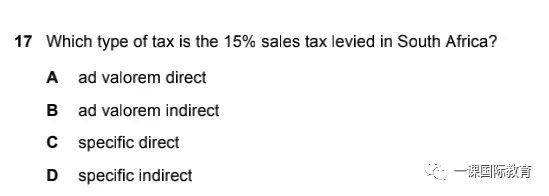
知识点:税收种类
附第三单元完整知识点清单
3Governmentmicroeconomicintervention(aSlevel) |
|
a) Maximum and minimum prices 最高价和最低价 |
• meaning and effect on themarket |
b) Taxes (direct and indirect) 税收(直接/间接) |
• impact and incidence oftaxes• specific andad valoremtaxes• average and marginal rates oftaxation• proportional, progressive and regressivetaxes• the Canons ofTaxation |
c) Subsidies 补贴 |
• impact and incidence ofsubsidies |
d) Transfer payments 转移支付 |
• meaning and effect on themarket |
e) Direct provision of goods and services 直接提供物品/服务 |
• meaning and effect on themarket |
f) Nationalisation andprivatisation 国有化和私有化 |
• meaning and effect on themarket |
D:对宏观经济学原理的掌握(来自第四单元):AD/AS curve (总需求/总供应曲线);inflation 通货膨胀;balance of payment (国际收支);exchange rate(汇率)等都是考试重点。
下面?我们一起看几道真题:(9708-m2020-Paper 1/2-Q23) -The Macro Economy
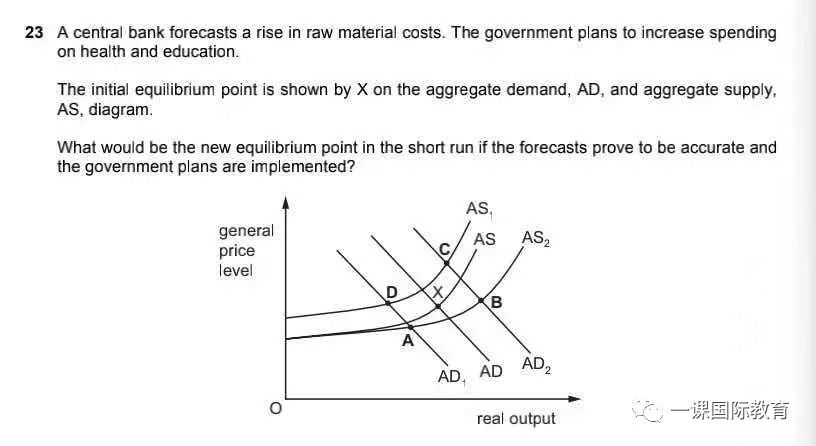
知识点:AD/AS曲线
(9708-m2020-Paper 1/2-Q22) -The Macro Economy
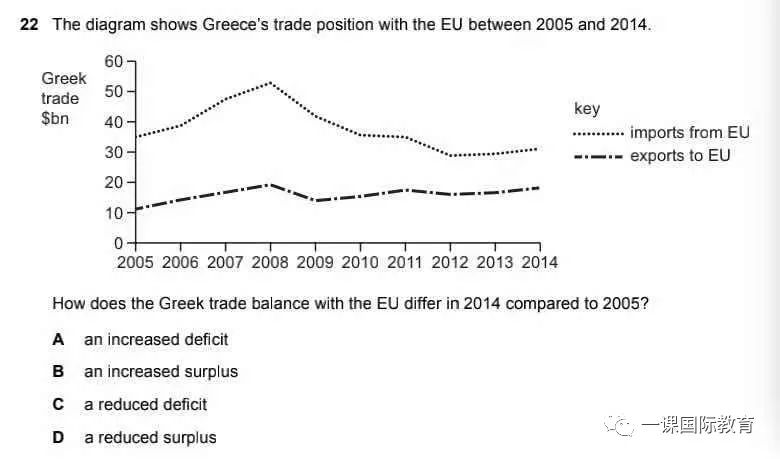
知识点:国际收支
附第四单元完整知识点清单
4Themacroeconomy(aSlevel) |
|
| a) Aggregate Demand (AD) and Aggregate Supply (AS) analysis 总需求(AD)/总供应(AS) |
• theshapeanddeterminantsofADandAScurves; AD = C + I + G + (X –M) • the distinction between a movement alonganda shift in AD andAS • the interaction of AD and AS and the determination of the level of output, pricesandemployment |
b) Inflation 通货膨胀 |
• the definition of inflation; degrees of inflation and the measurement of inflation; deflationanddisinflation • the distinction between money values andrealdata • thecausesofinflation(cost-pushanddemand-pullinflation) • the consequences ofinflation |
c) Balance of payments 国际收支 |
• the components of the balance of payments accounts (using the IMF/OECD definition): currentaccount;capitalandfinancialaccount; balancingitem • meaning of balance of payments equilibrium anddisequilibrium • causes of balance of payments disequilibrium in each component of theaccounts • consequences of balance of payments disequilibriumondomesticandexternal economy |
E: 宏观经济学政策(来自第四单元):这个单元的重点是要分清国家各种政策——fiscal policy, monetary policy 和 supply side policy的区别。
附三大政策区别区别图:
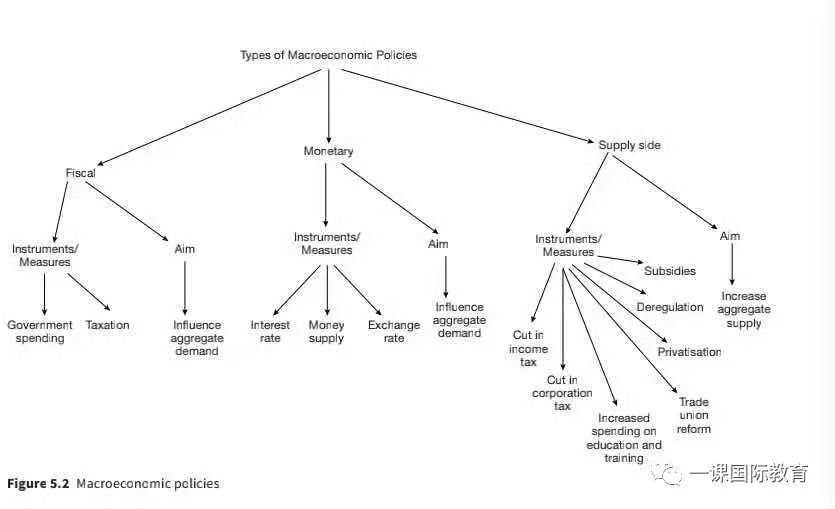
paper 2 具体介绍
part 2分为section A (data- response)和section B (essay)两个部分。
section A的date- response题会提供素材,这部分要求考生们能用1-5单元中学到的经济学原理来分析现实生活中的问题。
data- response题可以以微观为主,也可以以宏观为主。但是近几年来的data题越来越喜欢考宏观。(9708-s2020-Paper 2/2)
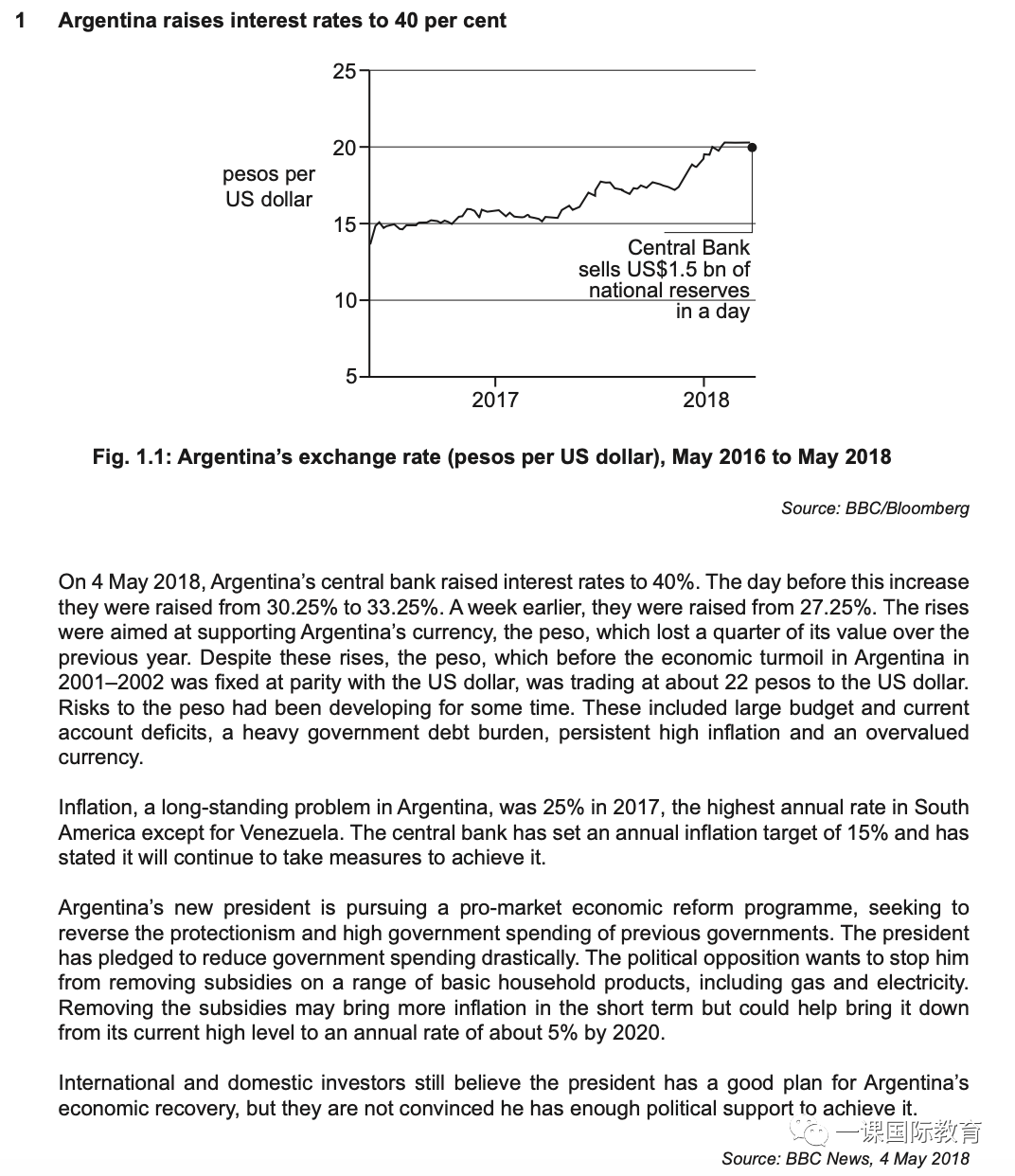
素材
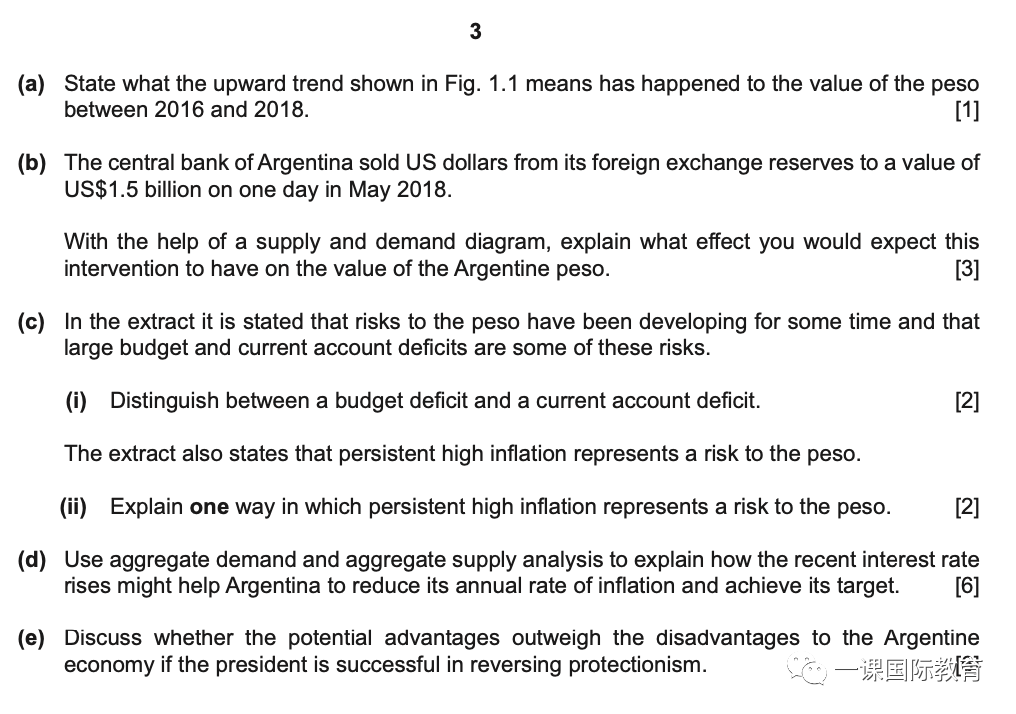
小问题
每一个素材下面都有5个小问题,每个问题都有对应分值。考生们在答题时要关注分值,分值多的需要答得更全面。section A中常见的丢分点有以下几个:
- 题目要求画图,考生没有画图。
- 考生画图以后横纵坐标没有任何标注。
- 题目中出现专有的经济学术语,这道题的分值又比较高,考生没有解释术语或者没有把计算公式列出来。
- 最后一题需要双边讨论,列举优点和缺点,还需要总结。很多考生少了总结这一部分。
section B 是essay。这一部分没有素材,只有题干,考生需要在阅读完题干后写出一篇小essay。essy题是三选一的,这一点很友好,因为大家可以选择自己熟悉的话题。
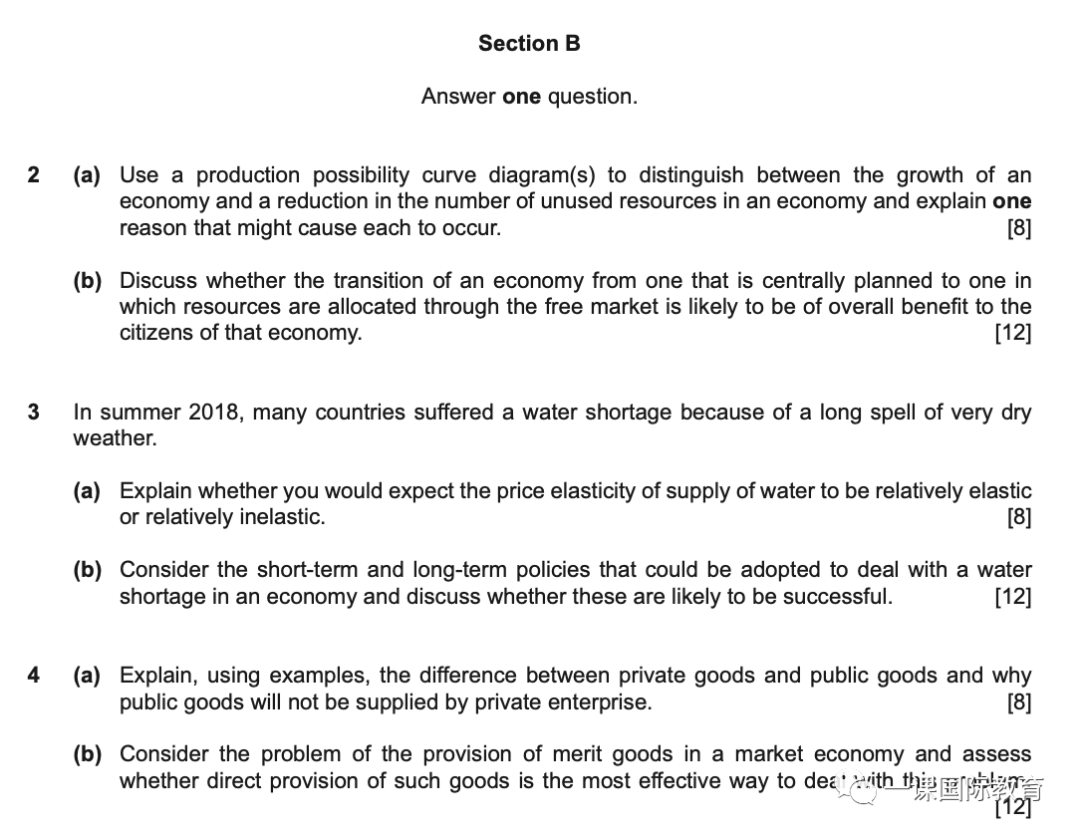
以上就是所有关于AS 经济学的考试介绍啦,真的超详细的。






